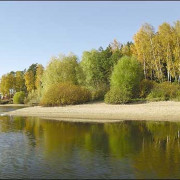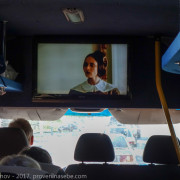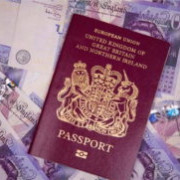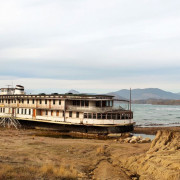Небоскреб эмпайр-стейт-билдинг
Содержание:
- There was a short-lived plan to add 11 floors to the Empire State Building.
- Параметры ===
- Demolishing Glamor
- It was constructed during a race to create the world’s tallest building.
- Рекомендуем для туристов:
- The Race to the Sky
- Raising the Steel Skeleton of the Empire State Building
- Design features
- Lots of Coordination
- Background
- A woman survived a 75-story plunge in one of the building’s elevators.
- The Plan to Build the Empire State Building
- Достопримечательность для туристов
- Архитектура здания
- История небоскреба: проектирование и строительство
- Использование как терминала для дирижаблей
- Смотровые площадки
- Особенности небоскреба
- Similar skyscrapers
- The Empire State Building Elevators
- It was modeled after two earlier buildings.
- History
- An inflatable King Kong was attached to the Empire State Building for the film’s 50th anniversary—with mixed results.
There was a short-lived plan to add 11 floors to the Empire State Building.
Credit: Roberto Machado Noa/LightRocket via Getty Images
Shortly after the World Trade Center towers were erected in the early 1970s, an architect at the firm Shreve, Lamb and Harmon concocted a scheme that would allow the Empire State Building to keep its crown as the world’s tallest skyscraper. The proposed plan called for the building’s 16-story tower to be demolished and replaced by a new top section that would increase its height to 113 stories and 1,495 feet. If completed, the renovation would have made the Empire Building taller than both the World Trade Center and the Sears Tower—which was then under construction—but the idea was quickly dropped due to cost concerns and complaints that it would destroy the building’s iconic look.
Параметры ===
Архитектура
=== Архитектура
? здании 102 этажа, его высота — 381,3 метра. Вместе с
телевизионной башней, надстроенной в 50-е годы, он достигает общей
высоты 443 метра. Коммерческие площади занимают первые 85 этажей
здания (257 211 м²). Остальные 16 этажей — это надстройка в стиле
ар-деко, на 102 этаже которой расположена смотровая площадка.
Эмпайр-стейт-билдинг — первое здание в мире, имеющее более 100
этажей. В башне расположены 6500 окон и 73 лифта. Здание весит 331
000 тонн, построено на двухэтажном фундаменте и поддержано стальной
конструкцией весом в 54 400 тонн. На него пошло десять миллионов
кирпичей и 700 километров кабеля. Общая площадь окон — два гектара,
а площадь фундамента — более 8 тыс. м². Лестница насчитывает 1860
ступеней, где один раз в год проводится соревнование на скорейший
подъём. В офисных помещениях могут разместиться 15 000 человек, а
лифты способны за один час перевезти 10 000 человек. В башне
расположен около 1000 офисов, количество сотрудников составляет
21000 человек, что делает Эмпайр-стейт-билдинг вторым по числу
сотрудников зданием Америки после
Пентагона. Общая длина труб инфраструктуры достигает 113 км,
длина электрических проводов — 760 км. Отопление паровое низкого
давления. Для отделки были использованы известняковые плиты.
Поскольку небоскрёб окружён различными деловыми зданиями, то
снизу полностью не обозревается. Он выполнен в скромном, но
элегантном стиле Ар-деко. В отличие от большинства современных
небоскрёбов, фасад башни выполнен в классическом стиле. По серому
каменному фасаду ввысь тянутся полосы нержавеющей стали, а верхние
этажи расположены тремя уступами. Холл внутри имеет длину 30 метров
и высоту в три этажа. Он украшен панно с изображениями семи чудес
света, только к ним добавлено и восьмое: сам Эмпайр-стейт-билдинг.
В зале Рекордов Гиннеса собрана информация о необычных рекордах и
рекордсменах.
IMG_6474 — Fumitaket @ Flickr
Освещение
? 1964 году на башню была установлена система прожекторного
освещения для того, чтобы подсвечивать верхушку в цветовой гамме,
соответствующей каким-либо событиям, памятным датам или праздникам
(День святого Патрика,
Рождество и т. п.). К примеру, после восьмидесятилетнего юбилея
и последовавшей за ним смерти Фрэнка Синатры, подсветка здания была
выполнена в синих тонах, из-за прозвища певца «Мистер Голубые
глаза». После смерти актрисы Фэй Рэй в конце 2004 года, освещение
башни было полностью выключено на 15 минут.
Традиционно, в дополнение к обычному освещению, подсветка здания
выполняется в цветах нью-йоркских спортивных команд в те дни, когда
в городе проходят матчи этих команд (оранжевый, синий и белый для
New York Knicks, красный, белый и синий для New York Rangers и т.
д.). Во время Теннисного турнира US Open в подстветке доминирует
жёлтый цвет (цвет теннисного мяча). В июне 2002 года, в дни
празднования юбилея Её Величества Королевы Соединённого Королевства
Великобритании и Северной Ирландии Елизаветы II, подсветка была
пурпурно-золотой (цвета дома Виндзоров).
En el Empire State Building — fmorondo @ Flickr
Смотровые площадки
?мотровые площадки Эмпайр-стейт-билдинг являются одним из самых
популярных мест паломничества туристов в Нью-Йорке и одними из
самых посещаемых смотровых площадок в мире. Всего их посетило более
110 млн человек. Площадка на 86-м этаже имеет угол обзора в 360
градусов. Ещё одна смотровая площадка открыта на 102 этаже. В 1999
году она была закрыта, затем снова открыта в 2005 году. Верхняя
площадка полностью закрыта, её площадь намного меньше площади
нижней площадки. Из-за большого количества посетителей, верхняя
площадка закрывается в наиболее напряжённые дни. Туристы оплачивают
посещение смотровых площадок в кассе на 86 этаже (для посещения 102
этажа существует отдельная дополнительная оплата).
Аттракционы
?а втором этаже здания находится аттракцион, открытый в 1994
году для туристов. Аттракцион называется New York Skyride и
представляет собой имитатор воздушного путешествия по городу.
Длительность аттракциона — 25 минут.
С 1994 по 2002 год действовала старая версия аттракциона, в
которой Джеймс Духан, Скотти из сериала «Звёздный Путь», в качестве
пилота самолёта, в юмористическом стиле пытался сохранить контроль
над самолётом во время шторма. После теракта 11 сентября 2001 года,
этот аттракцион был закрыт. В новой версии сюжет остался прежним,
однако башни Всемирного торгового центра были убраны из декораций,
а пилотом вместо Духана стал Кевин Бейкон. Новая версия
преследовала прежде всего не развлекательные, а образовательные и
информационные цели. В неё также были включены патриотические
элементы.
Demolishing Glamor
The first section of the construction timetable was the demolition of the Waldorf-Astoria Hotel. When the public heard that the hotel was to be torn down, thousands of people sent requests for mementos from the building. One man from Iowa wrote asking for the Fifth Avenue side iron railing fence. A couple requested the key to the room they had occupied on their honeymoon. Others wanted the flagpole, the stained-glass windows, the fireplaces, light fixtures, bricks, etc. Hotel management held an auction for many items they thought might be wanted.6
The rest of the hotel was torn down, piece by piece. Though some of the materials were sold for reuse and others were given away for kindling, the bulk of the debris was hauled to a dock, loaded onto barges, and then dumped fifteen miles into the Atlantic Ocean.
Even before the demolition of the Waldorf-Astoria was complete, excavation for the new building was begun. Two shifts of 300 men worked day and night to dig through the hard rock in order to make a foundation.
It was constructed during a race to create the world’s tallest building.
Credit: Tetra Images/Getty Images
In the late-1920s, as New York’s economy boomed like never before, builders were in a mad dash to erect the world’s largest skyscraper. The main competition was between 40 Wall Street’s Bank of Manhattan building and the Chrysler Building, an elaborate Art Deco structure conceived by car mogul Walter Chrysler as a “monument to me.” Both towers tried to best each other by adding more floors to their design, and the race really heated up in August 1929, when General Motors executive John J. Raskob and former New York Governor Al Smith announced plans for the Empire State Building.
Upon learning that the Empire State would be 1,000 feet tall, Chrysler changed his plans a final time and fixed a stainless steel spire to the top of his skyscraper. The addition saw the Chrysler Building soar to a record 1,048 feet, but unfortunately for Chrysler, Raskob and Smith simply went back to the drawing board and returned with an even taller design for the Empire State Building. When completed in 1931, the colossus loomed 1,250 feet over the streets of Midtown Manhattan. It would remain the world’s tallest building for nearly 40 years until the completion of the first World Trade Center tower in 1970.
Рекомендуем для туристов:
✓Tripster — крупнейший сервис онлайн-бронирования экскурсий в России.
✓Travelata.ru — поиск самых выгодных туров среди 120 надежных туроператоров.
✓Aviasales.ru — поиск и сравнение цен на авиабилеты среди 100 агентств и 728 авиакомпаний.
✓Hotellook.ru — поисковик отелей по всему миру. Сравнивает цены по многим системам бронирования, находя лучшее.
✓Airbnb.ru — самый популярный в мире сервис аренды жилья от хозяев (часто это выходит удобней и дешевле отеля). Перейдите по этой ссылке и получите в подарок на первое бронирование – 25$.
✓Сравни.ру — туристическая страховка онлайн, в том числе для визы.
✓Kiwitaxi.ru — международный сервис бронирования автомобильных трансферов. 70 стран и 400 аэропортов.
The Race to the Sky
When the Eiffel Tower (984 feet) was built in 1889 in Paris, it taunted American architects to build something taller. By the early twentieth century, a skyscraper race was on. By 1909 the Metropolitan Life Tower rose 700 feet (50 stories), quickly followed by the Woolworth Building in 1913 at 792 feet (57 stories), and soon surpassed by the Bank of Manhattan Building in 1929 at 927 feet (71 stories).
When John Jakob Raskob (previously a vice president of General Motors) decided to join in the skyscraper race, Walter Chrysler (founder of the Chrysler Corporation) was constructing a monumental building, the height of which he was keeping secret until the building’s completion. Not knowing exactly what height he had to beat, Raskob started construction on his own building.
In 1929, Raskob and his partners bought a parcel of property at 34th Street and Fifth Avenue for their new skyscraper. On this property sat the glamorous Waldorf-Astoria Hotel. Since the property on which the hotel was located had become extremely valuable, the owners of the Waldorf-Astoria Hotel decided to sell the property and build a new hotel on Park Avenue (between 49th and 50th Streets). Raskob was able to purchase the site for approximately $16 million.
Raising the Steel Skeleton of the Empire State Building
The steel skeleton was built next, with work beginning on March 17, 1930. Two-hundred and ten steel columns made up the vertical frame. Twelve of these ran the entire height of the building (not including the mooring mast). Other sections ranged from six to eight stories in length. The steel girders could not be raised more than 30 stories at a time, so several large cranes (derricks) were used to pass the girders up to the higher floors.
Passersby would stop to gaze upward at the workers as they placed the girders together. Often, crowds formed to watch the work. Harold Butcher, a correspondent for London’s Daily Herald described the workers as right there «in the flesh, outwardly prosaic, incredibly nonchalant, crawling, climbing, walking, swinging, swooping on gigantic steel frames.»7
The riveters were just as fascinating to watch, if not more so. They worked in teams of four: the heater (passer), the catcher, the bucker-up, and the gunman. The heater placed about ten rivets into the fiery forge. Then once they were red-hot, he would use a pair of three-foot tongs to take out a rivet and toss it — often 50 to 75 feet — to the catcher. The catcher used an old paint can (some had started to use a new catching can made specifically for the purpose) to catch the still red-hot rivet. With the catcher’s other hand, he would use tongs to remove the rivet from the can, knock it against a beam to remove any cinders, then place the rivet into one of the holes in a beam. The bucker-up would support the rivet while the gunman would hit the head of the rivet with a riveting hammer (powered by compressed air), shoving the rivet into the girder where it would fuse together. These men worked all the way from the bottom floor to the 102nd floor, over a thousand feet up.
When the workers finished placing the steel, a massive cheer rose up with hats waiving and a flag raised. The very last rivet was ceremoniously placed — it was solid gold.
Design features
Entrance lobby
Unlike most of today’s high-rise buildings, the Empire State Building features a classic facade. The modernistic, stainless-steel canopies of the entrances on Thirty-third and Thirty-forth Streets lead to two-story-high corridors around the elevator core, crossed by stainless steel and glass-enclosed bridges at the second floor level. The elevator core contains 67 elevators.
There are various setbacks in the building’s design, as required by New York City’s Zoning Resolution of 1916. The main purpose for the law was to reduce shadows cast by tall buildings. These setbacks give the building its unique tapered silhouette.
The lobby is three stories high and features an aluminum relief of the skyscraper without the antenna, which was not added to the spire until 1952. The north corridor contains eight illuminated panels, created by Roy Sparkia and Renée Nemorov in 1963, depicting the building as the Eighth Wonder of the World alongside the traditional seven.
Red and green floodlights during Christmas
Long-term forecasting of the life cycle of the structure was implemented at the design phase to ensure that the building’s future intended uses were not restricted by the requirements of future generations.
Floodlights illuminate the top of the building at night, in colors chosen to match seasonal and other events, such as Christmas and Independence Day. After the eightieth birthday and subsequent death of Frank Sinatra, for example, the building was bathed in blue light to represent the singer’s nickname «Ol’ Blue Eyes.»
The floodlights bathed the building in red, white, and blue for several months after the destruction of the World Trade Center, then reverted to the standard schedule. In June 2002, during the Golden Jubilee of Her Majesty Queen Elizabeth II of the United Kingdom, New York City illuminated the Empire State Building in purple and gold (the monarchical colors of the Royal House of Windsor). After the death of actress Fay Wray in late 2004, the building stood in complete darkness for 15 minutes in commemoration of her famous role in the movie King Kong, in which the building was prominently featured.
The Empire State Building has one of the most popular outdoor observatories in the world, having been visited by over 110 million people. The 86th floor observation deck offers impressive 360-degree views of the city. There is a second observation deck on the 102nd floor that is open to the public. It was closed in 1999, but reopened in November 2005. Completely enclosed and much smaller, it may be closed on high-traffic days.
Lots of Coordination
The construction of the rest of the Empire State Building was a model of efficiency. A railway was built at the construction site to move materials quickly. Since each railway car (a cart pushed by people) held eight times more than a wheelbarrow, the materials were moved with less effort.
The builders innovated in ways that saved time, money, and manpower. Instead of having the ten million bricks needed for construction dumped in the street as was usual for construction, Starrett had trucks dump the bricks down a chute which led to a hopper in the basement. When needed, the bricks would be released from the hopper, thus dropped into carts which were hoisted up to the appropriate floor. This process eliminated the need to close down streets for brick storage as well as eliminated much back-breaking labor of moving the bricks from the pile to the bricklayer via wheelbarrows.9
While the outside of the building was being constructed, electricians and plumbers began installing the internal necessities of the building. The timing for each trade to start working was finely tuned. As Richmond Shreve described:
Background
The present site of the Empire State Building was first developed as the John Thomson Farm in the late eighteenth century. The block was occupied by the original Waldorf Hotel in the late-nineteenth century and was frequented by the social elite of New York.
The Empire State Building was designed by the architectural firm Shreve, Lamb and Harmon, which produced the building drawings in just two weeks, possibly using its earlier design for the Carew Tower in Cincinnati, Ohio as a basis. The general contractors were Starrett Brothers and Eken, and the project was financed by John J. Raskob and Pierre S. DuPont. The construction company was chaired by Alfred E. Smith, a former Governor of New York.
A woman survived a 75-story plunge in one of the building’s elevators.
During the 1945 bomber crash, several pieces of the B-25’s engine sliced through the Empire State Building and entered an elevator shaft. The cables for two cars were severed, including one containing a 19-year-old elevator operator named Betty Lou Oliver. The elevator plummeted from the 75th floor and soon crashed into the subbasement, but luckily for Oliver, more than a thousand feet of severed elevator cable had gathered at the bottom of the shaft, cushioning the blow. The fall may have also been slowed by a pocket of compressed air generated by the car’s rapid descent. Despite suffering severe injuries including a broken neck and back, Oliver survived.
The Plan to Build the Empire State Building
After deciding on and obtaining a site for the skyscraper, Raskob needed a plan. Raskob hired Shreve, Lamb & Harmon to be the architects for his new building. It is said that Raskob pulled a thick pencil out of a drawer and held it up to William Lamb and asked, «Bill, how high can you make it so that it won’t fall down?»1
Lamb got started planning right away. Soon, he had a plan:
But was the plan high enough to make the Empire State Building the tallest in the world? Hamilton Weber, the original rental manager, describes the worry:
The race was getting very competitive. With the thought of wanting to make the Empire State Building higher, Raskob himself came up with the solution. After examining a scale model of the proposed building, Raskob said, «It needs a hat!»4 Looking toward the future, Raskob decided that the «hat» would be used as a docking station for dirigibles. The new design for the Empire State Building, including the dirigible mooring mast, would make the building 1,250 tall (the Chrysler Building was completed at 1,046 feet with 77 stories).
Достопримечательность для туристов
Небоскреб отличается уникальной системой подсветки. Жители Нью-Йорка уже знают, что по праздникам здание освещается разными цветами. Двести прожекторов освещают 30 верхних этажей, меняя пластиковые диски. В день Независимости небоскреб освещается сине-красно-белыми лампочками. В день Святого Патрика освещается зеленым, а в день Колумба зелено-бело-красным.
с стал настоящим символом города. В США продается множество сувениров в виде статуэток башни.
На втором этаже здания находится аттракцион под названием «NEW YORK SKYRIDE». Он имитирует полет над городом. Аттракцион подходит и взрослым и детям и включает в себя 25 минут полета. С 1994 г. по 2001 г. действующей декорацией была старая версия, в которой актер Джеймс Духан из сериала «Звездный путь» будучи пилотом самолета по имени Скотти, в развлекательной манере управлял самолетом во время шторма. В связи с терактом в 2001 году, аттракцион был закрыт и отредактирован. Здания ВТЦ убрали из декораций, пилотом стал актер Кевин Бейкон. Аттракцион стал носить образовательный, информационный, патриотический характер. Вход на аттракцион находится со стороны 33 улицы и открыт от с 8.00 до 22.00 круглый год.
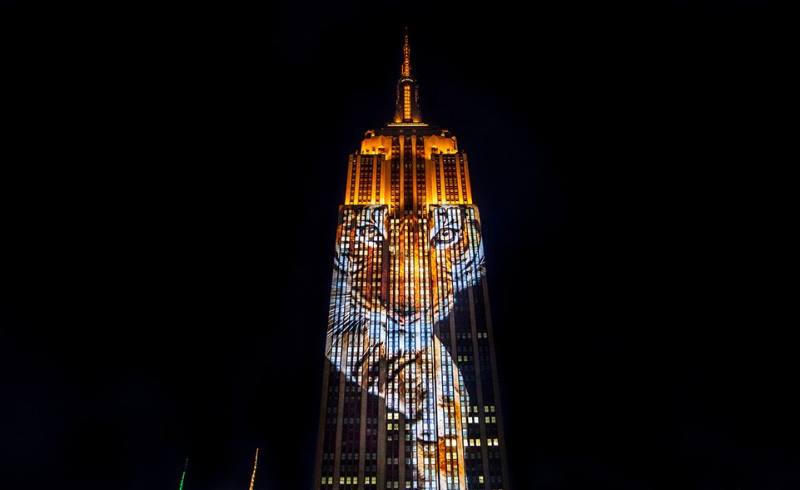
На заметку!
Эмпайр Стейт Билдинг – является популярным зданием, с которым было отснято более 90 фильмов.
Также небоскреб известен многим, за проведение там необычных соревнований – бег по лестницам небоскреба. Который проходит каждый год, в начале февраля. Бегунам необходимо преодолеть 1576 ступеней с 1 по 86 этаж. В 2003 году здесь был установлен рекорд Полом Крейком, который пробежал за 9 мин. 33 сек.
На 86 и 102 этажах небоскреба оборудованы смотровые площадки. Площадка 102 этажа ограничена в обзоре. А вот смотровая площадка 86 этажа имеет круговую панораму на все 360°. Отсюда обозреваются городские улицы, Бруклинский мост, высотки, парки и пролив. Все достопримечательности отмечены на схеме.
На заметку!
Во время посещения Эмпайр Стейт Билдинг стоит освободится от лишних вещей. Камер хранения в здании не предусмотрено, зато на входе стоит охрана, которая запрещает проносить с собой габаритные сумки, продукты питания.
Высотное здание является привлекательным для людей, желающих свести счеты с жизнью. За все время было совершено более 30 самоубийств. В 1979 году произошел забавный случай. Американка прыгнула с 86 этажа, но сильный ветер занес ее на 85 -й этаж. Самоубийство не случилось, а вот перелом бедра она себе заработала.
Архитектура здания
Разработкой проекта, на который ушло всего 2 недели, занималась группа архитекторов из фирмы «Шрив, Лэм и Хармон». В конструкции здания они удачно совместили настроение общественности в период Великой депрессии и новые требования к городской застройке.
Небоскреб имеет ступенчатую форму, сужается кверху. Это одно из требований Закона о зонировании городской территории (1916 г.). Сужение верхних этажей должно было обеспечить хорошее освещение улиц.
Фасады лишены какого-либо декора и максимально упрощены, однако объект без сомнений относят к стилю ар-деко. Не последнюю роль в этом играет набор материалов — хромированной стали, пластмассы и стекла. Новая и смелая комбинация на тот период времени.
История небоскреба: проектирование и строительство
Заглянув в историю, мы узнаем, что проектом здания занялась архитектурная компания «Шрив, Лэмб и Хармон», главным архитектором которой был Уилльям Ф. Лэмб.
При проектировании использовались ранние разработки для небоскребов Рейнольдс Билдинг в Северной Каролине и Керью Тауэр в штате Огайо.
Строительство башни стартовало в День святого Патрика – 17 марта 1930 года, и завершилось спустя 1 год и 45 дней, всего на сооружение небоскреба потребовалось более 7 миллионов человеко-часов.
Над постройкой здания трудились 3400 рабочих: большая часть – эмигранты из Европы, а также несколько сотен монтажников – выходцев из индейского племени томогавков, отличительной чертой которых было отсутствие боязни высоты.
На момент начала строительства ЭСБ будущие символы Нью-Йорка – Трамп Билдинг и Крайслер Билдинг – претендовали на титул высочайшего небоскреба в кратчайшие сроки и уже находились в процессе стройки.
Между ними разгорелась нешуточная борьба, в результате которой ЭСБ обогнал всех: здание росло на четыре с половиной этажа в неделю, рекорд – четырнадцать этажей за десять дней.
Так, спустя 410 дней, 5662 м3 стройматериалов, 60 тысяч тонн стальных конструкций, 10 млн кирпичей и 700 км кабеля, на горизонте Манхэттена появилось высочайшее на тот момент здание в мире.
Использование как терминала для дирижаблей
В начале эксплуатации здания его шпиль задумывалось использовать в качестве причальной мачты для дирижаблей. 102-й этаж был причальной платформой со сходнями для подъёма на дирижабль. Специальный лифт, курсирующий между 86-м и 102-м этажами, мог использоваться для транспортировки пассажиров. Регистрация, по задумке, производилась на 86 этаже. Однако идея воздушного терминала была признана несостоятельной ввиду соображений безопасности (сильные и нестабильные воздушные потоки наверху здания делали причаливание очень сложным, и после первой попытки стало понятно, что эта идея утопична). Ни один цеппелин так и не причалил к зданию. В 1952 году на месте терминала было размещено телекоммуникационное оборудование.
Смотровые площадки
Основная смотровая площадка
На 86 этаже небоскреба действует высочайшая смотровая площадка под открытым небом в Нью-Йорке. Здесь были сняты десятки киносцен, пережиты миллионы незабываемых моментов.
Для справки! Площадка располагается вокруг шпиля здания, представляя взору посетителей панораму Нью-Йорка и его окрестностей. Отсюда открываются захватывающие виды на Центральный парк, реку Гудзон, пролив Ист-Ривер, Бруклинский мост, Таймс-сквер, статую Свободы и многое другое.
Можно также воспользоваться обзорным биноклем с многократным увеличением и рассмотреть объекты в мельчайших подробностях.
Верхняя смотровая площадка
Шестнадцатью этажами выше – на 102 этаже здания – действует ещё одна смотровая площадка, по площади значительно уступающая основной, к тому же полностью закрытая.
Особенности небоскреба

Как и полагается, здание имеет ряд особенностей, принадлежащие именно ему. Конечно, к ним многие отнесут так называемые «Технические характеристики».
Хотелось бы, перед их перечислением, отметить нечто иное:
- первоначально, шпиль возвышающийся над зданием предназначался для швартовки цеппелинов (в 1952 году была произведена попытка дирижабля состыковаться со шпилем, которая не увенчалась успехом;
- вестибюль имеет длину 30 метров и высоту в 3 этажа;
- почтовая служба США была вынуждена присвоить собственный индекс зданию;
- количество работников превышает 21 тысячу человек;
- здание пережило столкновение с самолетом Б-25 «Митчелл», который врезался в него между 79 и 80 этажом;
- в фильме о Кинг-Конге полицейские вертолеты расстреливают его и он падает с Эмпайр Стейт Билдинг;
- площадь остекления равна 2 км2;
- вес небоскреба составляет ~ 331 000 тонн;
- здание было сдано заказчику на 45 дней раньше запланированного срока;
- рабочее время строителей составляло 13 часов, при этом их труд оценивался в 1$,25¢;
- при строительстве был использован не весь бюджет, 5 миллионов долларов было сохранено. Однако экономия средств была вызвана не грамотностью при строительстве, а наступлением экономического кризиса 1931 года.
Высота
Согласно официальным данным, высота сооружения составляет 381 метр. Стоит отметить, что указанная высота указана без учета шпиля.
Беря шпиль в расчётах высоты, здание возвышается на 443 метра. Во всей этой величественной высоте расположены офисные помещения на 85 этажах. На 86 и 102 этаже располагается смотровая площадка.
Архитектура
В архитектуре здание применен стиль ар-деко. Его применение характерно для многих зданий возводимых в США в период 20 – 40-х годов двадцатого столетия. Первоначально, архитектурная составляющая была представлена 102 этажами и крышей, на которой располагалась причальная мачта для цеппелинов.
Высота на тот момент составляла 381,3 м. Позднее, в 50-х годах на крыше был демонтировано мачту для причаливания и вместо неё было установлена телевизионная башня. На её вершине расположился шпиль. Теперь высота здания со шпилем составляла 443 м.
Смотровые площадки

О местах с которых открывается шикарный вид на Манхеттен можно говорить много, но как говорится, лучше один раз посетить. Сделать это будет не так просто, так как ежегодно на них бывает достаточно большое количество человек.
Вариантов для посещения предложено два на:
- 85 этаже;
- 102 этаже.
Площадка на 85-ом этаже позволяет смотреть на город на все 360°, что является несомненным преимуществом. Именно эта площадка была доступна посетителям здания с первого дня открытия. Вторая площадка, расположенная на 102 этаже
Она носит закрытый характер, то есть полюбоваться видами можно только глядя в окна. В 1999 году было принято решение о её закрытии. Однако в 2005 году администрация здания снова решила открыть её для посетителей.
Важно! После открытия здания именно смотровые площадки пользовались стабильно большим спросом на посещение в первые 20 лет. Они приносили владельцам достаточно хорошие суммы дохода.
Аттракционы
В 1994 году, на 2-ом этаже было организованно открытие аттракциона, под названием New York Skyride. Аттракцион специально ориентирован на посетителей из числа туристов. Он представляет собой симулятор путешествия по городу в воздухе. Время одного сеанса на аттракционе занимает 25 минут.
Similar skyscrapers
Height comparison with the Burj Khalifa, Willis Tower, Taipei 101, and the Petronas Twin Towers
The Torre Latinoamericana in Mexico City very much resembles the Empire State Building, including setbacks and antenna. The main differences are the size and outer paneling—the Torre Latinoamericana is glass-paneled on the outside. Also of similar design are the Seven Sisters in Moscow (such as the main building of Moscow State University) and the Palace of Culture and Science in Warsaw, Poland. The Williams Tower in Houston is a glass-architecture version of the design, and the entrance on the ground floor is very similar.
The Reynolds Building, headquarters for the R.J. Reynolds Tobacco Company in Winston-Salem, North Carolina is said to be the prototype for the Empire State Building. The Carew Tower in Cincinnati, is also thought to be the basis of the tower, due to the similar design by the same architectural firm, Shreve, Lamb and Harmon Associates. Another tower thought to be an inspiration for the Empire State Building is the Penobscot Building in Detroit, Michigan, completed in 1928.
The Empire State Building Elevators
Have you ever stood waiting in a ten — or even a six-story building for an elevator that seemed to take forever? Or have you ever gotten into an elevator and it took forever to get to your floor because the elevator had to stop at every floor to let someone on or off? The Empire State Building was going to have 102 floors and expected to have 15,000 people in the building. How would people get to the top floors without waiting hours for the elevator or climbing the stairs?
To help with this problem, the architects created seven banks of elevators, with each servicing a portion of the floors. For instance, Bank A serviced the third through seventh floors while Bank B serviced the seventh through 18th floors. This way, if you needed to get to the 65th floor, for example, you could take an elevator from Bank F and only have possible stops from the 55th floor to the 67th floor, rather than from the first floor to the 102nd.
Making the elevators faster was another solution. The Otis Elevator Company installed 58 passenger elevators and eight service elevators in the Empire State Building. Though these elevators could travel up to 1,200 feet per minute, the building code restricted the speed to only 700 feet per minute based on older models of elevators. The builders took a chance, installed the faster (and more expensive) elevators (running them at the slower speed) and hoped that the building code would soon change. A month after the Empire State Building was opened, the building code was changed to 1,200 feet per minute and the elevators in the Empire State Building were sped up.
It was modeled after two earlier buildings.
North Carolina’s Reynolds Building. (Credit: Gabriel Benzur/The LIFE Images Collection/Getty Images)
When he drew up its plans in 1929, architect William Lamb of the firm Shreve, Lamb and Harmon is said to have modeled the Empire State Building after Winston-Salem, North Carolina’s Reynolds Building—which he had previously designed—and Carew Tower in Cincinnati. The two earlier Art Deco buildings are now often cited as the Empire State’s architectural ancestors. On the Reynolds Building’s 50th anniversary in 1979, the Empire State Building’s general manager even sent a card that read, “Happy Anniversary, Dad.”
History
The building’s opening coincided with the Great Depression in the United States, and as a result much of its office space went unrented in the beginning. In its first year of operation, the observation deck took in over a million dollars, as much as its owners earned in rent that year. The lack of renters led New Yorkers to deride the building as the «Empty State Building.»
Empire State Building with downtown New York City in the background.
The building’s distinctive art deco spire was originally designed to be a mooring mast and depot for dirigibles. The 102nd floor was originally the landing platform for the Dirigible Gang Plank. One elevator, which travels between the 86th and 102nd floors was supposed to transport passengers after they checked in at the observation deck on the 86th floor. However, the idea proved to be impractical and dangerous after a few attempts with airships, due to the powerful updrafts caused by the size of the building itself. The T-shaped mooring devices remain in place, and a large broadcasting antenna was added to the top of the spire in 1952.
At 9:49 a.m. on Saturday July 28, 1945, a B-25 Mitchell bomber flying in a thick fog accidentally crashed into the north side of the Empire State Building between the 79th and 80th floors, where the offices of the National Catholic Welfare Council were located. One engine shot through the side opposite the impact and another plummeted down an elevator shaft. The fire was extinguished in 40 minutes. Fourteen people were killed in the incident. Elevator operator Betty Lou Oliver survived a plunge of 75 stories inside an elevator, which still stands as the Guinness World Record for the longest, survived, elevator fall recorded. Despite the damage and loss of life, the building was open for business on many floors on the following Monday.
Over the years, more than 30 people have committed suicide from atop the building. The fence around the observatory terrace was put up in 1947 after five people tried to jump over a three-week span. In 1979, Elvita Adams jumped from the 86th floor, only to be blown back onto the 85th floor and left with only a broken hip. Despite security measures, the building was also the site of suicides as recently as 2004 and 2006.
An inflatable King Kong was attached to the Empire State Building for the film’s 50th anniversary—with mixed results.
Inflatable King Kong on the Empire State Building. (Credit: Harry Hamburg/NY Daily News Archive via Getty Images)
Of the more than 90 movies featuring the Empire State Building, none is more famous than 1933’s “King Kong,” which ends with the titular giant ape scaling the skyscraper and being attacked by swarming biplanes. The original scene was shot in a studio, but for the film’s 50th anniversary in April 1983, a balloon company president tried to recreate it by attaching a inflatable King Kong to the Empire State’s mooring mast. Unfortunately, the $150,000 stunt didn’t go as planned. The 84-foot Kong balloon suffered a tear while being inflated, ruining a plan to have it buzzed by vintage aircraft. It was finally inflated a few days later, but it only stayed on the building for a short time before another rip forced the project to be scrapped altogether.
